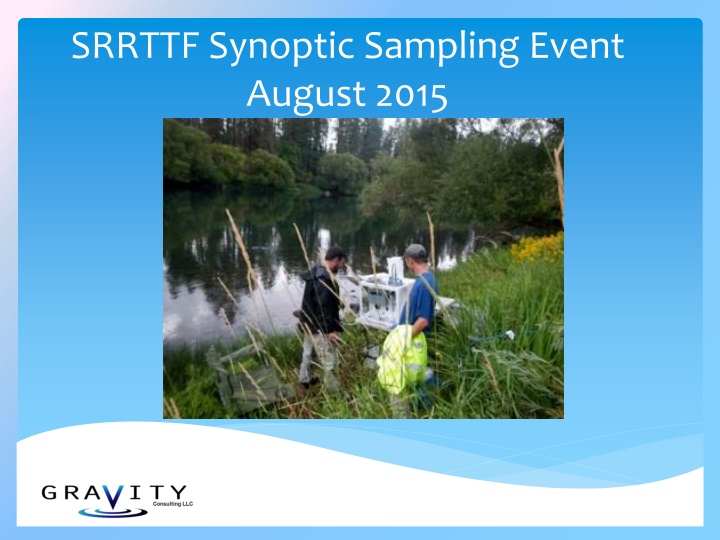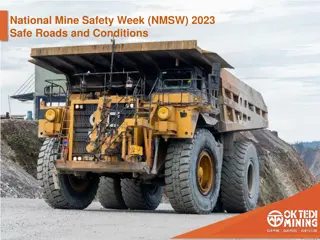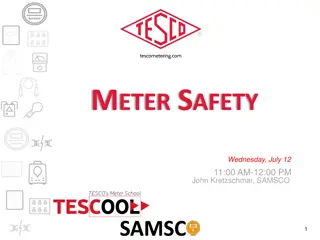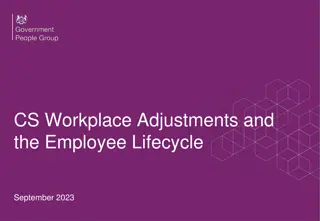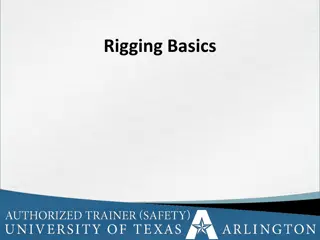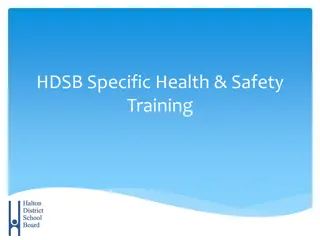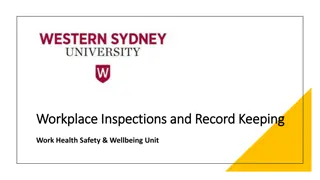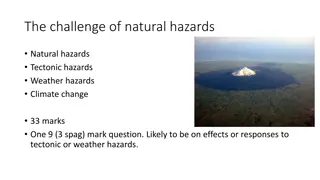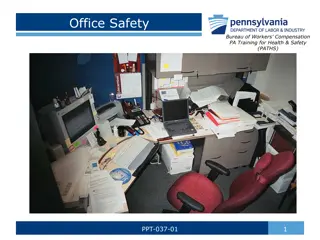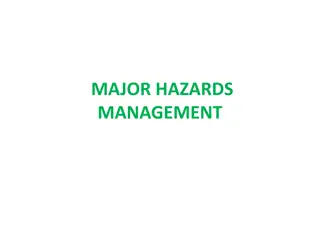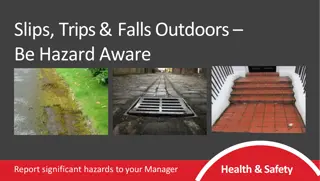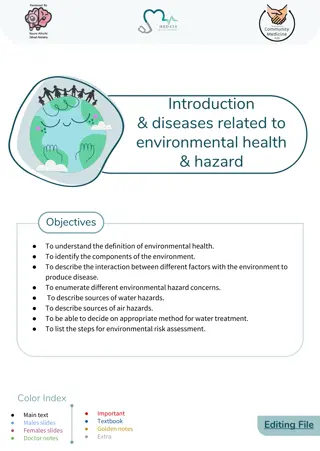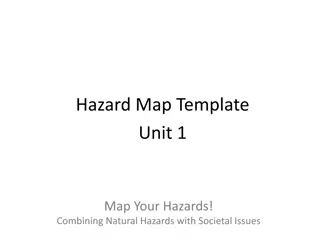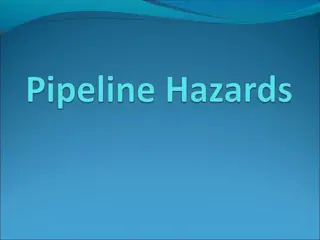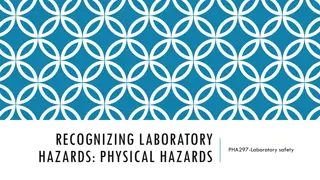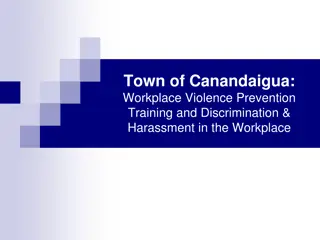Understanding Physical Hazards in the Workplace
Physical hazards in the workplace such as falls, machines, confined spaces, noise, temperature extremes, electricity, and more can pose serious risks to workers. From falls being a common cause of injuries to the dangers of working with machines and confined spaces, this content explores the various risks associated with different physical hazards. Understanding these hazards is crucial for implementing safety measures and preventing workplace accidents.
Download Presentation

Please find below an Image/Link to download the presentation.
The content on the website is provided AS IS for your information and personal use only. It may not be sold, licensed, or shared on other websites without obtaining consent from the author.If you encounter any issues during the download, it is possible that the publisher has removed the file from their server.
You are allowed to download the files provided on this website for personal or commercial use, subject to the condition that they are used lawfully. All files are the property of their respective owners.
The content on the website is provided AS IS for your information and personal use only. It may not be sold, licensed, or shared on other websites without obtaining consent from the author.
E N D
Presentation Transcript
SRRTTF Synoptic Sampling Event August 2015
Planning Sample scoping meeting and site reconnaissance on July 28 - 29, 2014 Scope revised to include vessel use, high volume sampling, and in-field stream flow Lab coordination with AXYS for high volume extraction Revisions to SAP with LimnoTech Health and safety plan and invasive species plan Field implementation plan prepared
Water Sampling o Commenced on August 12, 2014 o 8 river gage stations sampled on August 12, 14, 16, 18, 20, 22, and 24 o 7 facility stations sampled on August 13, 19, and 21 o High volume sampling at 2 river gage stations on August 15 and 24 o Normal, composite, and archive samples were collected o Daily QA/QC samples included blanks and replicate (duplicate)
Sampling Methodology All samples collected using clean hands and dirty hands consistent with EPA Document 1669 Direct immersion sampling at most locations Dip sampler used at a few facilities due to safety concerns (e.g., confined space) High volume water sampling In-field measurements for temperature, pH, specific conductivity, turbidity, and dissolved oxygen
Sample Handling, Transport, and Custody All samples were kept on ice (from field lab freezers), secured in locked vehicle Samples were hand delivered each morning to SVL and shipped via FedEx to AXYS Custody records and seals were used
Deviations from SAP and Corrective Action Hayden facility not sampled zero low flow discharge to Spokane River SR-4 not collected on August 12 due to wind and lightning collected the following day FedEx system-wide computer shutdown held up samples shipped on August 18th for an extra day samples arrived slightly over recommended temperature Stream flow at SR9 not measured August 22 due to equipment malfunction Two sample jars broke during shipment to AXYS; 1 was a duplicate and other was from SR9 archive sample later sent for analysis Additional sample collected at SR15 on August 23 due to rainfall event
Stream Flow No Stream Gauge data were available at SR-9 (Green Acres) in-stream measurements were collected Green Street Gauge data were not available - station was unexpectedly shut down Coeur d'Alene data included only height information not flow
Reporting Draft Field Sampling Report was submitted in October 2014 and summarized the following: o Methods for sampling, handling, and analyses o Identified samples collected including QA/QC o Field parameters measured o Available gage station flow data o Identified deviations Final Field Sampling Report will be submitted in January 2015 (following input at this meeting)
Data Observations Progressively higher concentrations as you move from Lake to Nine Mile Some sampling locations had very high standard deviation (e.g. Hangmans) No obvious trending of congeners to lower chlorinated states Top PCBs in river = 11, 61, 52, 20 Top PCBs in facilities = 20, 118, 52, 61 SR-12 composite was 3X higher than discrete grabs High Blank Contamination from Atmospheric conditions observed
High Volume Sampling and Analysis 125-145 congeners detected with HVS and 60-85 through traditional sampling Dissolved phase was found at concentrations approximately 4 times solid phase PCB concentrations in HVS were approximately 2 times higher at 9-mile versus the upstream lake output Correlations with other parameters (e.g., TSS) have not been evaluated Congener fingerprinting has not been investigated
Lessons Learned in the Field Communication with the facilities is key to daily sampling schedule Additional forethought on available flow data and potential need (and tools) to gather in-field flow data High volume sampling provided more sensitive PCB measurements Because of protective foam for shipping jars, blue ice was less effective in cooling than double-bagged ice Additional field parameter instrument calibrations and backup solutions may be useful
Recommendations for future studies Collect data over multiple seasons to understand SD Install current profiler (ADCP) at Coeur d'Alene station Additional HVS sampling stations on river and at facilities Investigate hyporeic zones input to dissolved phase pcb sources in focus areas Collect fine sediments from potential source areas vortex sampling
